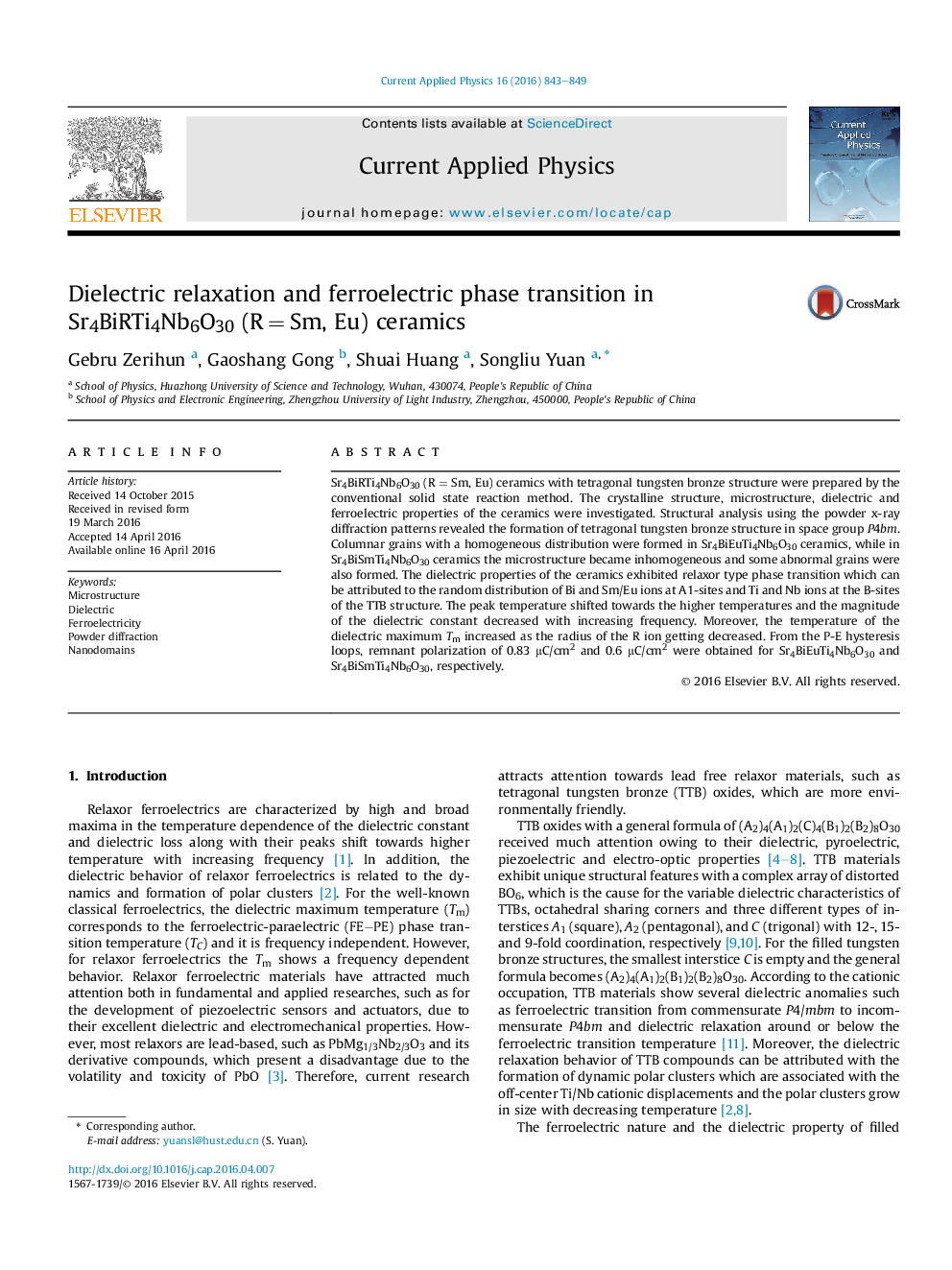| Article ID | Journal | Published Year | Pages | File Type |
|---|---|---|---|---|
| 1785582 | Current Applied Physics | 2016 | 7 Pages |
•Relaxor ferroelectric behavior due to the formation of the polar nanoregions.•Improvement of the ferroelectric transition temperature well above RT.•Polarization nanoregions appear on cooling with the increase of interaction.•columnar grains are formed.•Broad dielectric constant peaks with strong frequency dispersion are observed.
Sr4BiRTi4Nb6O30 (R = Sm, Eu) ceramics with tetragonal tungsten bronze structure were prepared by the conventional solid state reaction method. The crystalline structure, microstructure, dielectric and ferroelectric properties of the ceramics were investigated. Structural analysis using the powder x-ray diffraction patterns revealed the formation of tetragonal tungsten bronze structure in space group P4bm. Columnar grains with a homogeneous distribution were formed in Sr4BiEuTi4Nb6O30 ceramics, while in Sr4BiSmTi4Nb6O30 ceramics the microstructure became inhomogeneous and some abnormal grains were also formed. The dielectric properties of the ceramics exhibited relaxor type phase transition which can be attributed to the random distribution of Bi and Sm/Eu ions at A1-sites and Ti and Nb ions at the B-sites of the TTB structure. The peak temperature shifted towards the higher temperatures and the magnitude of the dielectric constant decreased with increasing frequency. Moreover, the temperature of the dielectric maximum Tm increased as the radius of the R ion getting decreased. From the P-E hysteresis loops, remnant polarization of 0.83 μC/cm2 and 0.6 μC/cm2 were obtained for Sr4BiEuTi4Nb6O30 and Sr4BiSmTi4Nb6O30, respectively.
